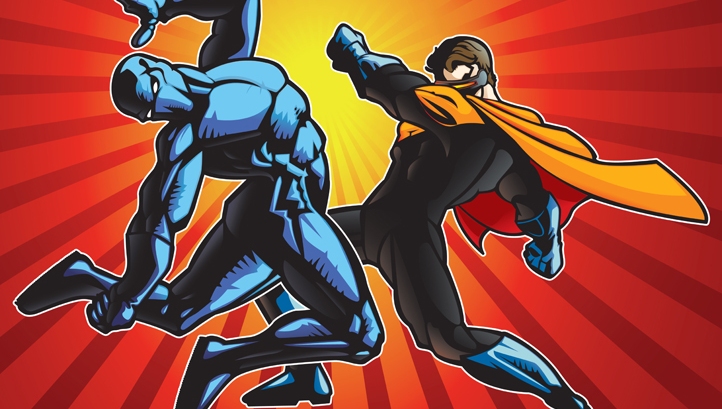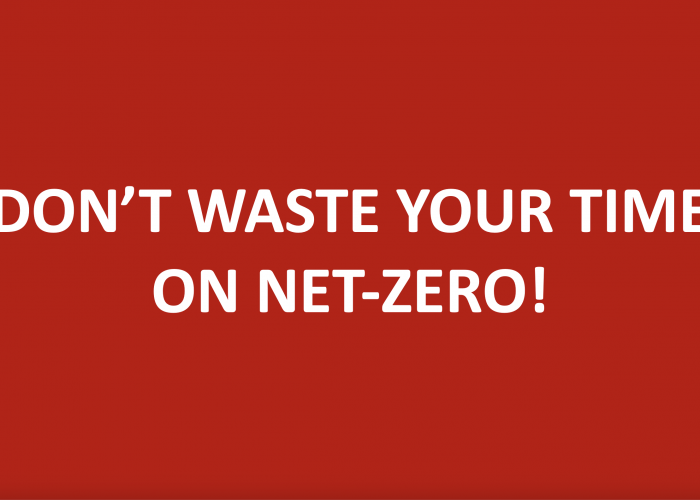The circular economy is growing up; moving beyond simple radical resource efficiency, towards an authentic triple-bottom-line. As with any transition, not everything is great. Business model innovation is the battleground for success – and while there are heroes, there are also villains holding back the real transformation that is needed.

The Circular economy is coming of age. From its humble origins in the early 1970s – with Kalundborg’s Industrial Symbiosis, Walter Stahel’s vision for an ‘economy in loops’, and Braungart & McDonough’s instrumental cradle-to-cradle design thinking – this game-changing concept is reaching the mainstream of business. Now, everyone wants to go circular, from McKinsey to M&S.
The circular economy is also moving up the maturity profile; beyond the initial attractions of radical resource efficiency and more sustainable production – although these are still important dimensions that we need to retain and build upon – towards the necessary evolutionary link with more sustainable consumption. This is important; no matter how good we think we are, in terms of resource efficient production, if we don’t address our unsustainable consumption patterns – we will still deliver net degradation, and we will fail to deliver ‘one-planet prosperity’.
Meeting this challenge, we need joined-up thinking between sustainable production and consumption: this is all about the business model, how real value is created, and how money is made and distributed. And if we starting addressing this challenge properly, it will mean new business model options – including product-take-back, the sharing economy, and so on. We face a business model choice: it comes down to whether your business model is about giving and regenerating, or if it is geared towards depleting and destroying both natural and social capital. This new bottom line for business will require a very different mindset.
There are some heroes that recognise this, seemingly unafraid to take risks and make the fundamental changes that are necessary; they are embracing the business model challenge in truly entrepreneurial ways.
We will be heroes
Everyone knows and loves Patagonia – with its long-established product-take-back service, demonstrating responsibility for the entire product lifecycle, including repairs. The outdoor clothing company recognised long ago that, “the single best thing we can do for the planet is to keep our stuff in use longer.” With all the hype and razzmatazz surrounding the circular economy, Patagonia’s approach is still refreshingly simple and authentic.
I’m also increasingly impressed with the level of circular innovation in smaller enterprises. Norsk Ombruk AS is a dynamic and ambitious remanufacturing company from Norway, focused on extending the useful and productive life of household electrical goods: providing high quality products that last a further five years, beyond the usual five-year lifespan, and at half the price of new machines.
By keeping products at their highest level of use, for longer, means that Norsk Ombruk has not only harnessed a way of saving resources and energy, preventing waste, and reducing carbon emissions – through business model innovation, the company is also able to deliver a positive social impact. Families on lower incomes can now afford higher quality, energy-efficient products.
Collaboration through the value chain is essential in meeting the circular business model challenge.
Collaboration through the value chain is essential in meeting the circular business model challenge. Working in partnership with incumbents like Electrolux – which are less interested in direct ownership of remanufacturing solutions – Norsk Ombruk is able to source old products and deliver an eco-effective solution. Also, working in partnership with retailers like Elkjøp and IKEA, Norsk Ombruk has access to mainstream sales channels.
This business model not only extends product life, it extends brand life, too; the Electrolux brand keeps serving you, the customer, for longer – in a way that does not keeping enticing you to throw away and buy more. This also generates longer-term loyalty, as purchasers of quality re-manufactured products can tend to trade-up, later on. Meeting the business model challenge is a real game-changer for all concerned.
There are even heroes in the world of banking. For the circular economy to reach critical mass we need business model innovation at scale – and, for this to happen, we need investment at scale. A genuine revolution in financial innovation is required – even more fundamental than fintech – to help support and enable affordable circular economy transitions. Dutch bank ING is stepping up to the plate, positioning itself as a trusted partner for circular businesses.
ING has also recognised that the circular economy transition poses challenges to the standard banking business model – especially in terms of investment attractiveness and decision-making. In conventional terms, banks are looking for good asset values as a means of security. Circular economy business models don’t work like that. How do we value a bunch of used products and resources? In a circular world financial returns are based on our ability to regenerate value from old assets – business models are therefore based on cash flow, rather than collateral values.
ING has detected this important shift in how value is created in a circular economy, how companies will need support in shifting their business models, and in recognising that banks need to change their own value and risk models to fit with and support this transition. That is what real financial innovation is about.
OK, so we can see lots of promise for authentic circular economy transitions – but there are some villains, too. Could it be that that mighty Apple is actively blocking participation towards a circular economy?
Could there be villains?
Apple appears to be missing the trick on two key fronts. The primary issue concerns the useful life of its products. In a circular world, we need to keep products in their highest use for as long as possible. things don’t look too great here: the average American keeps their phone for an average of 1.5-2.5 years, before moving on to the latest, more exciting model; caught in a pincer movement between slick marketing on the one side, and a policy of deliberate planned obsolescence on the other. Apple stands accused of deliberately slowing down older machines when upgrading software, and is now facing a lawsuit for this practice. Anyone with an iPhone or iPad that reaches the grand-old age of two years will know how this feels. There is no smoke, without fire: an online petition, calling for Apple to mend its ways, has now reached more than 200,000 signatures.
Driving the market in this way, Apple is effectively encouraging conspicuous over-consumption – at times even openly mocking those with older equipment: a strategy that contributes to the growing amount of e-waste worldwide (estimated to reach 65 million tonnes by 2017).
And if we just focus on mobile phones, for a moment: collectively, we are all party to an international stockpile of at least 500 million obsolete handsets, weighing in at 56,000 tonnes, which contains enough material to remanufacture around 500 million new phones. Staggering.
While Apple appears to have dipped its toe in the water with product-take back, its approach appears to offer little in practice. Try it – I did – and you might be underwhelmed with what you are offered for your old equipment. This approach appears to offer little more than an inconvenient disposal service, rather than a serious shift towards a circular business model. I think we also need to see innovation that goes beyond carbon-energy-resource intensive robots breaking up old phones.
The second major issue with Apple’s business model concerns the company’s move to actively block customers wishing to repair and re-use hardware. Apple maintains very tight control over parts and repair – and so it is not easy for third parties to effect good and legitimate repairs. A New York bill, called the Fair Repair Act, attempts to make independent repairs much easier – requiring hardware manufacturers to make repair instructions and parts available to the public. If passed by state lawmakers, this bill could open up independent access to repairs across the planet. While Apple, sadly, has lobbied hard to kill the bill, the e-waste stockpile keeps on growing.
Of course, Apple is not the only company struggling with the business model challenge. The conventional retail model presents another important example – configured, as it is, towards selling more and more products, each year. M&S’s Shwopping offers a good start in adapting the retail model – and provides a useful channel to get unwanted old clothes into the charity market – but will M&S embrace the opportunity to sell remanufactured goods? If you can grab an ex-display model for half price, why not a high quality remanufactured one?
Quite simply, most incumbents are making money from unsustainable consumption. This has to change.
The problem is, virtually all our business models are founded on the notion of ‘continuous growth’, and as such they are configured for maximising sales and consumption within a linear take-make-waste model of economy. And so, this is the real battleground for the future of an authentic circular economy. Meeting this challenge means rethinking the business of marketing and selling. As Paul Polman points out, there is a tendency for marketers to be blinkered and keep pushing consumption-based models. Quite simply, most incumbents are making money from unsustainable consumption. This has to change.
Herein lies the real tension at the heart of the sustainability movement; if we don’t address the business model and its impact on consumption patterns, all talk of brands becoming sustainable is nonsense. Let’s remember, the primary purpose of any brand is to create a vehicle that engenders loyalty, so that we will buy more of that branded product. Going forward, we need a completely different emphasis on how we use our brands in meeting this challenge.
Going circular: if we really mean it
Going ‘circular’ is not just a case of minor tweaks to business-as-usual, but means embracing real innovation, and real change in our business models – towards sustainable consumption, as well as production: making a fair return, within planetary and societal boundaries.
The opportunity for new business models is out there; based on inherently sustainable products, configured in a service format, rather than as a conventional, disposable one-off purchase. This approach places a greater onus on the business in taking responsibility for its impacts over the entire product lifecycle – but the rewards are also there for genuine innovation.
The real revolution will be the struggle between genuine innovation, optimising the business model – versus the old ways of maximising narrow self-interest.
The real revolution will be the struggle between genuine innovation, optimising the business model – versus the old ways of maximising narrow self-interest: this will be increasingly played out in the battlefield of the business model. The real heroes of this revolution are the people that are ready to address the real challenges and make real shifts – not those trying to cling on to old business models, for the sake of maximising short-term profits.
The challenge for all businesses – whether new players or incumbents – is to re-think the business model: moving beyond radical efficiency to deliver the triple-bottom-line, including societal benefits.
Here are six key takeaways: –
1) Products designed for long-term use – if the hardware is great, make it last – and, quite importantly, dump any planned obsolescence.
2) Design for repair – make independent repair easily accessible for all.
3) Products as a service/product take-back – at the end of a longer useful life, provide real incentives, and easily accessible infrastructure: in every store, in every town, around the planet.
4) Products designed for disassembly – that can be easily remanufactured and/or recycled, bypassing the need for expensive robots, and maximising the amount of resources at their highest use.
5) Open up the value chain – if you don’t wish to do the whole new circular economy value chain piece yourselves, then please let others have a go: enable the opportunity for small, local repairers to flourish. Work with them and collaborate.
6) Embrace ‘re-quality’ – if you are worried about the quality of repairs and the impact on your brand values, go learn from others that are working in partnership in this space, like Norsk Ombruk and Electrolux.
In going circular, we need to get ready for a completely new way of doing business.
In going circular, we need to get ready for a completely new way of doing business; we will undoubtedly end up selling less new stuff – but, this is as it should be, when shifting to a business model that works within planetary and societal boundaries.
The important point is you get to keep customers happy, providing them with long-life products, and with a business model that keeps providing shared prosperity. You remain the champion innovator for people and for planet. Otherwise, you are just another corporation, clinging on to an outdated notion of maximising your own interests – a model we can no longer afford.
In the transition to a more sustainable world, we are all going to have to give more and take less – if we really mean it. The circular economy is growing up – it’s time for our business models to do likewise. And, if you don’t innovate, somebody else will.
Mike Townsend is founder and chief executive of Earthshine Group, and author of The Quiet Revolution (Routledge, forthcoming). This article was originally published on Edie.net.



















